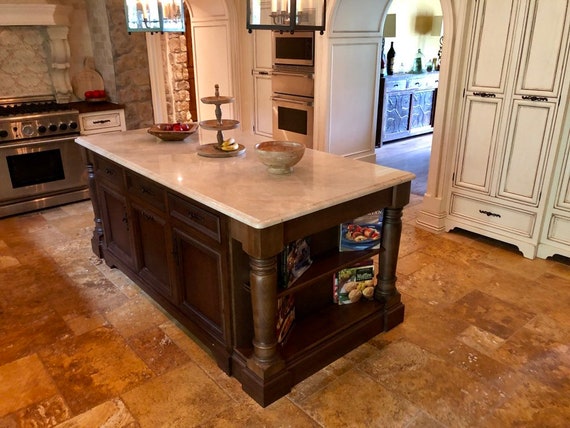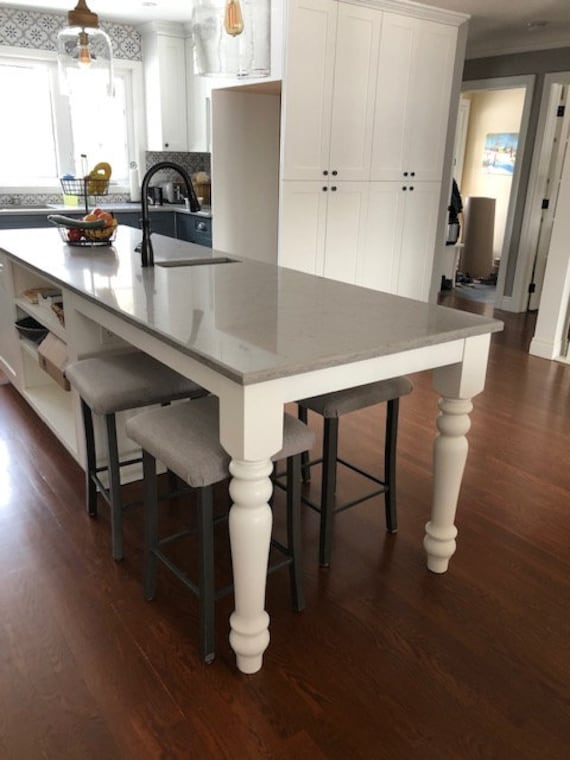Change Your Space with Innovative Kitchen Island Leg Designs
Change Your Space with Innovative Kitchen Island Leg Designs
Blog Article
Checking Out the Important Features of a Kitchen Island Leg for Your Culinary Room
The cooking area island serves as a central center in any type of cooking space, and the selection of leg design is critical in boosting both its performance and aesthetic charm. Comprehending the vital features of cooking area island legs-- including material options, design styles, and stability variables-- can significantly affect the general experience within the kitchen.
Significance of Kitchen Island Legs
Kitchen area island legs play a critical function in both the performance and looks of a kitchen space. They not just sustain the weight of the island however likewise boost the total style, contributing to the kitchen area's visual allure. The choice of legs can determine the design of the kitchen area, be it contemporary, conventional, or rustic.
Functionally, robust and appropriately made legs guarantee stability, enabling the safe use of the island for various jobs such as food preparation, dining, or amusing. Strong legs avoid changing and wobbling, offering a trustworthy surface area for everyday activities.
Moreover, the elevation and positioning of the legs can affect the comfort degree for those seated at the island. A well-considered height can suit bar feceses or chairs, promoting a welcoming atmosphere for gatherings.
Along with these sensible factors to consider, kitchen area island legs can function as a focal factor in the room (kitchen island leg). Ornamental or distinctly developed legs can elevate the design visual, making the island a focal point. Thus, selecting the appropriate cooking area island legs is essential for stabilizing type and function in any kind of cooking room
Product Options for Legs
Choosing the suitable material for cooking area island legs substantially affects both longevity and layout. Usual material alternatives consist of steel, timber, and stone, each offering distinct advantages.
Wood is a preferred option because of its warmth and adaptability. It can be conveniently tailored to match various design styles, from rustic to modern. Woods like oak and maple offer superb stamina and long life, while softer timbers can be more vulnerable to deterioration.
Metal legs are preferred for their smooth, modern-day visual. kitchen island leg. Stainless steel and light weight aluminum are not only robust yet also immune to rust and deterioration, making them optimal for kitchen environments. They can produce an industrial look and are commonly available in various coatings to enhance various other kitchen aspects
Rock legs, such as granite or marble, add an element of deluxe and security. While larger than other materials, they offer outstanding resilience and can withstand considerable weight. They might need extra support to guarantee correct balance.
Eventually, the choice of product should line up with both useful requirements and the general layout vision of the cooking area space, making certain that the island legs improve both utility and looks.
Style Styles to Think About
What style styles should be taken into consideration when selecting legs for a kitchen area island? The option of leg style considerably affects the general visual of your culinary area. For a contemporary kitchen area, minimalistic and sleek leg designs, such as stainless steel or geometric shapes, can enhance the modern allure, giving a clean and clean look.
On the other hand, standard cooking areas profit from traditional styles such as transformed or carved wooden legs, which add warmth and character. These choices typically feature complex details that match vintage furnishings. For a rustic atmosphere, consider legs made from reclaimed timber or wrought iron, which bring an organic, earthy top quality to the room.
If you lean in the direction websites of an industrial style, robust steel legs with a distressed coating might be excellent, supplying an edgy yet advanced touch. Furthermore, farmhouse design kitchen areas can incorporate chunky legs that stimulate a feeling of strength and homeliness.

Elevation and Security Factors
The height and stability of a kitchen island are crucial components that directly influence its functionality and customer experience. A perfect kitchen island leg need to offer adequate height to suit a variety of tasks, from cooking to informal eating. Usually, kitchen area islands separate 36 to 42 inches tall, lining up with basic counter and bar elevations. This variety ensures convenience for customers while executing various tasks, thus enhancing the overall usability of the area.
Stability is similarly important, especially as kitchen area islands often serve as focal factors in cooking environments. The leg's attachment to the island's base should be secure, making certain longevity and durability versus the wear and tear of day-to-day you can check here usage.
Personalization and Devices
Personalization alternatives and devices for kitchen area island legs can considerably boost both the visual allure and functionality of the space. Homeowners can choose from a selection of materials, including stone, wood, and metal, enabling smooth combination with existing kitchen area design. The selection of finish-- be it a natural discolor, repaint, or powder finishing-- additional individualizes the appearance, making certain that the island matches the total design style.
Along with material and finish, homeowners may likewise discover the consolidation of devices such as ornamental braces, adjustable feet, or integrated shelving. Brackets can offer added support while adding to a rustic or modern-day aesthetic. Adjustable feet are specifically useful for unequal floor covering, making sure the island continues to be stable and degree, which is crucial for both safety and security and use.

Conclusion
In verdict, kitchen island legs offer a vital role in supplying stability and boosting the overall aesthetic of the culinary area. Modification alternatives and devices can boost the cooking area island, making it an unique focal point within the home.
The cooking area island serves as a central center in any culinary space, and the choice of leg design is pivotal in boosting both its performance and visual charm. Recognizing the necessary functions of kitchen area island legs-- consisting of product choices, design styles, and stability elements-- can dramatically impact the total experience within the kitchen area.Kitchen area island legs play an important function in both the performance and visual appeals of a cooking area space.What layout styles should be thought about when picking legs for a kitchen island?In verdict, cooking area island legs serve a critical duty in supplying security and boosting the total visual of the culinary room.
Report this page